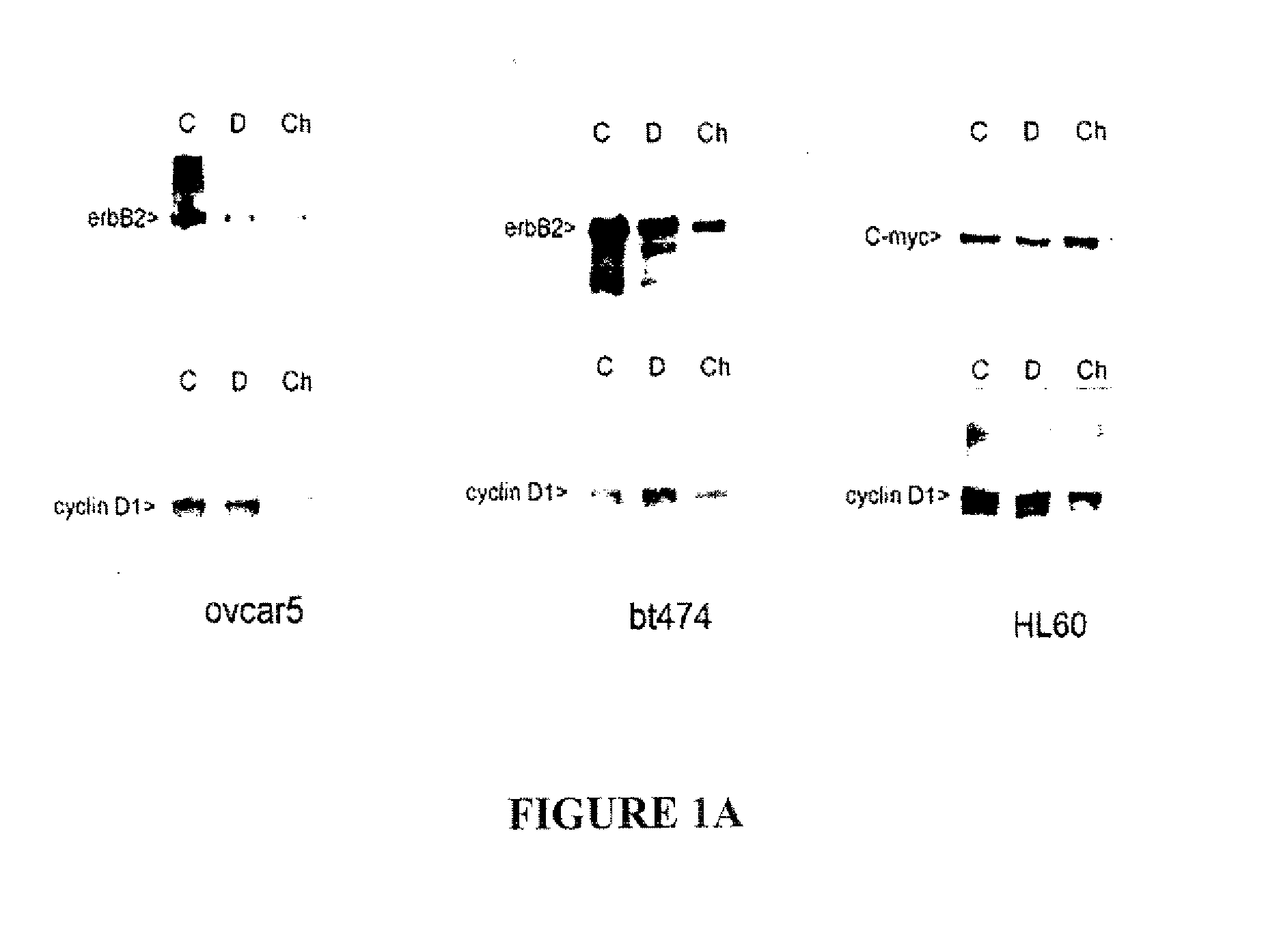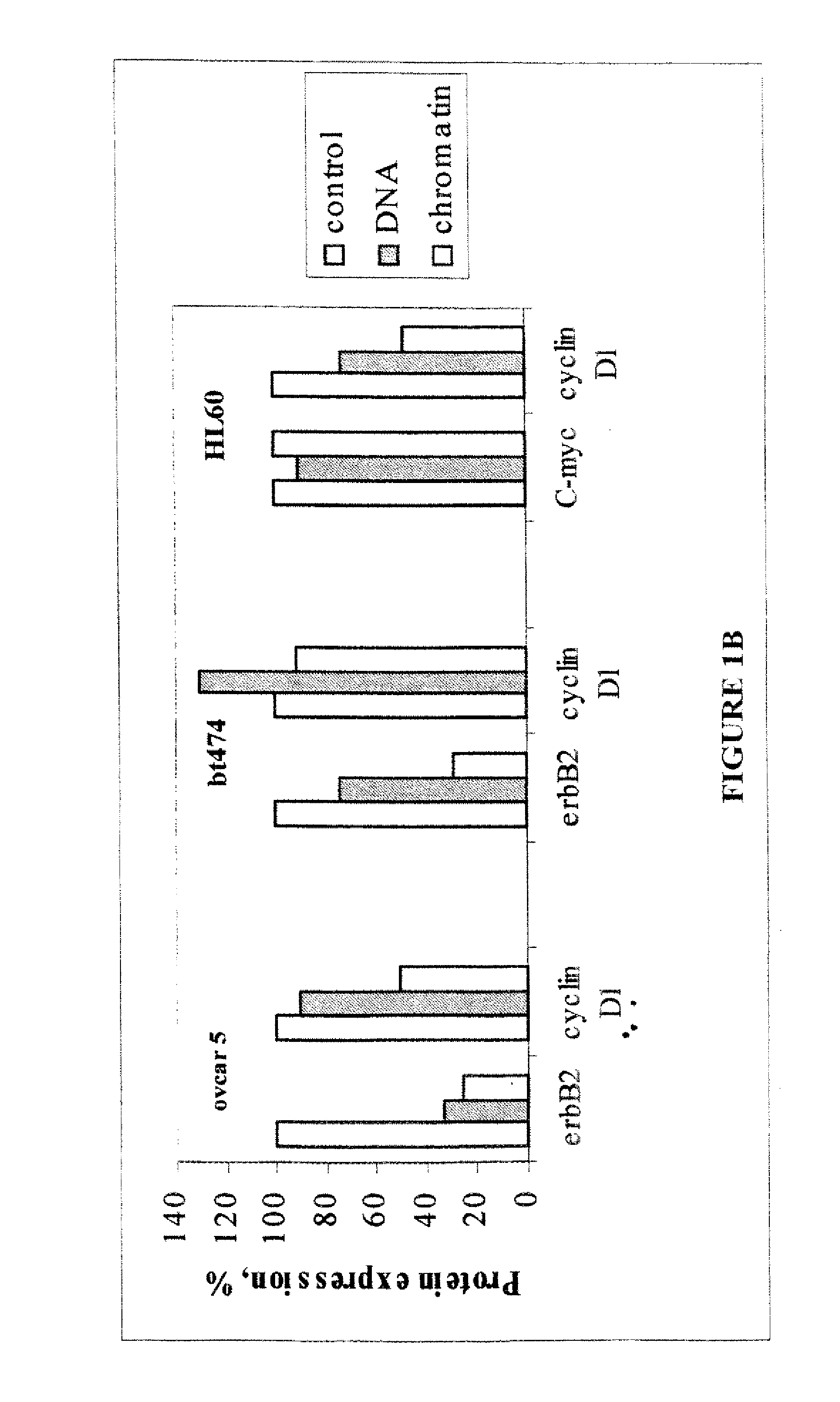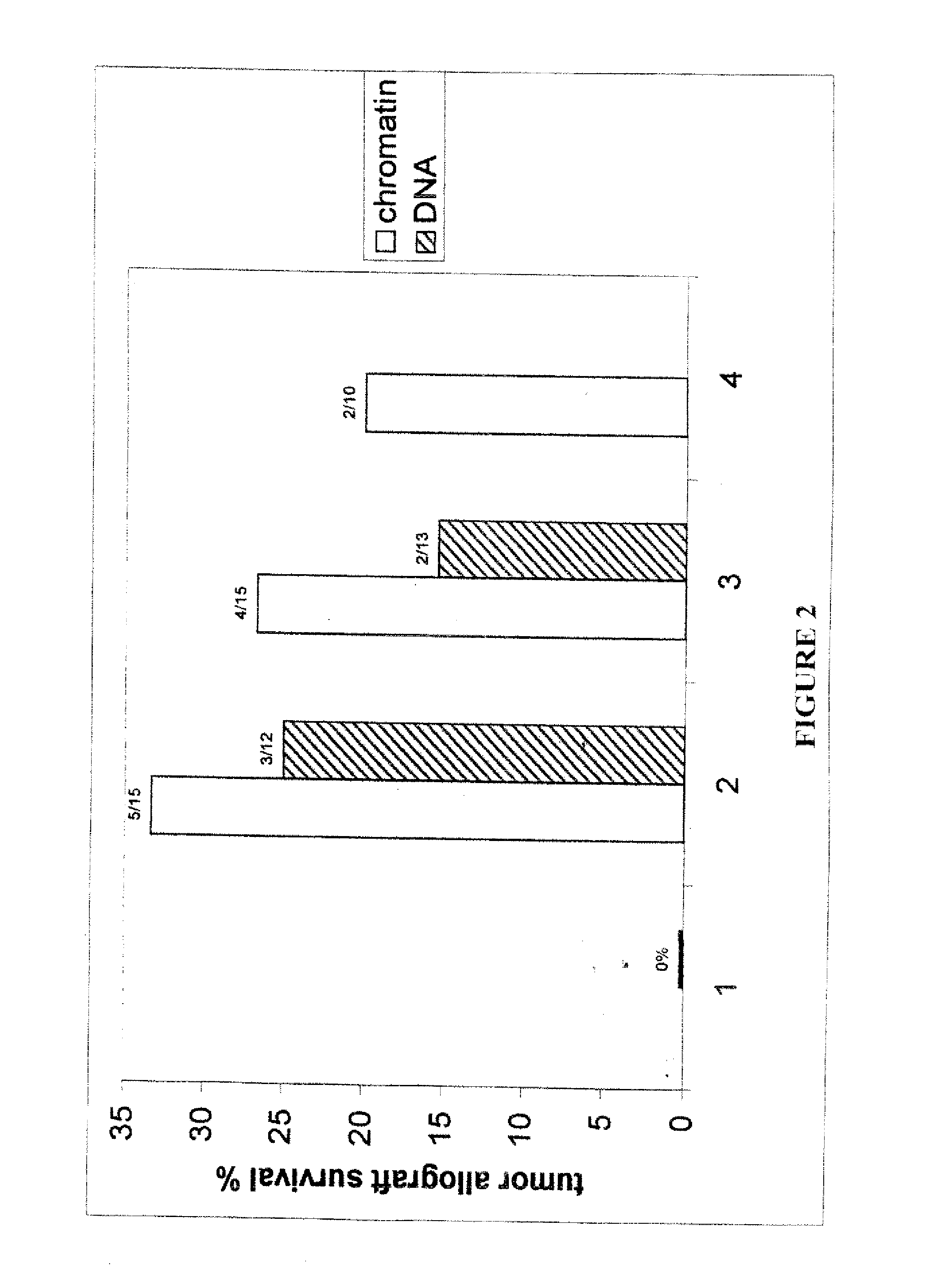Compositions comprising genome segments and methods of using the same
a technology of genome segments and compositions, applied in the field of compositions and methods of treating individuals with diseases and disorders, can solve the problems of requiring additional fine and time-consuming research, being subject to mutational pressure, and unable to meet the needs of human body, etc., and achieve the effect of gene defects
- Summary
- Abstract
- Description
- Claims
- Application Information
AI Technical Summary
Benefits of technology
Problems solved by technology
Method used
Image
Examples
example 1
Preparations of Human DNA in Cell Medium Change the Pattern of Specific Protein Expression in Human Cancer Cells in Culture
[0112] Example 1 demonstrates a capability of DNA preparations prepared from healthy donor sperm cells to influence differential expression of specific cell proteins in human tumor cell lines: breast tumor, BT474, ovarian carcinoma OVCAR5 and promielocytic leukemia HL60. The breast tumor cells are adhesive epithelial type cells forming a monolayer with multilayer cell clumps; OVCAR5 are fibroblastoid type cells forming a monolayer and HL60 cells are spherical cells that grow in suspension.
[0113] Two types of preparations were used: [0114] 1) purified total chromatin prepared from sperm cells and fragmented by nuclease digestion to oligonucleosome size (Wagner, et al. Arch. Androl. (1981) 7(3):251-7, which is incorporated herein by reference) (DNA lengths 200-3000 bp). [0115] 2) genomic DNA isolated from sperm cells (using Amersham-Pharmacia ‘genomic DNA isolat...
example 2
Introduction of Changes into Cellular Genomic DNA in Living Mice
Induction of Artificial Tolerance in Recipient Mice to a Donor Allograft
[0119] CBA and A / He are immunologically distinct mouse strains, and A / He allografts to CBA are never adopted but are always quickly rejected (Kaledin, et al. 1974 Conf. of the Res. Lab. of Exp. Biol. Models (Abstracts) Acad. Med. Sci, Moscow USSR p 5-52). The example demonstrates induction of immunological tolerance in CBA mice via injection of appropriate amounts of donor DNA preparations. The supposed mechanism of such induction is that injected donor DNA is substituting responsible alleles in CBA recipient cells to A / He specific alleles. This substitution will result in emergence of A / He antigens on CBA cells, which is probably followed by negative selection of lymphocyte clones normally responsible for the rejection.
[0120] A / He mouse strain specific hepatoma A, which is unable to grow in CBA mice mainly because of immunologic incompatibility,...
example 3
Random Human Genomic DNA Amplification in PCR Reaction
[0127] We used a random primer PCR procedure mainly according to Telenius et al (1992) supra with modifications. Telenius's 18-mer partially degenerated DOP 6-MW oligonucleotide primer was used for random DNA amplification. The typical protocol was as follows: PCR buffer with 0.2 mM MgCl2, 0.2 mM NTP, 2 μM DOP 6-MW, 40 U / ml Taq polymerase. Cycler: 95° C. 5′; 10″ 94° C., 10″ 53° C., 30″ 72° C. (the latter three steps are repeated 30 times), 10′ 72° C. Using, 1 ng of the DNA in a 50 μl reaction mixture we can get up to 10 μM DNA fragments 200-3000 bp in length. 1 liter mixtures yields 0.2 g DNA, 10 liter mixtures yields 2 g DNA. For 1 liter mixtures we need about 40,000 U Taq polymerase, 100 ml 2 mM NTP (100 mg NTP), 20 ml 100 μM DOP 6 M-W (2 μmol).
PUM
| Property | Measurement | Unit |
|---|---|---|
| inner diameter | aaaaa | aaaaa |
| concentration | aaaaa | aaaaa |
| concentration | aaaaa | aaaaa |
Abstract
Description
Claims
Application Information
 Login to View More
Login to View More - R&D
- Intellectual Property
- Life Sciences
- Materials
- Tech Scout
- Unparalleled Data Quality
- Higher Quality Content
- 60% Fewer Hallucinations
Browse by: Latest US Patents, China's latest patents, Technical Efficacy Thesaurus, Application Domain, Technology Topic, Popular Technical Reports.
© 2025 PatSnap. All rights reserved.Legal|Privacy policy|Modern Slavery Act Transparency Statement|Sitemap|About US| Contact US: help@patsnap.com



